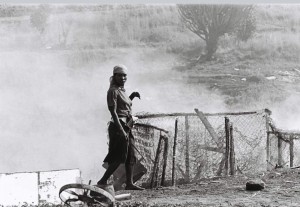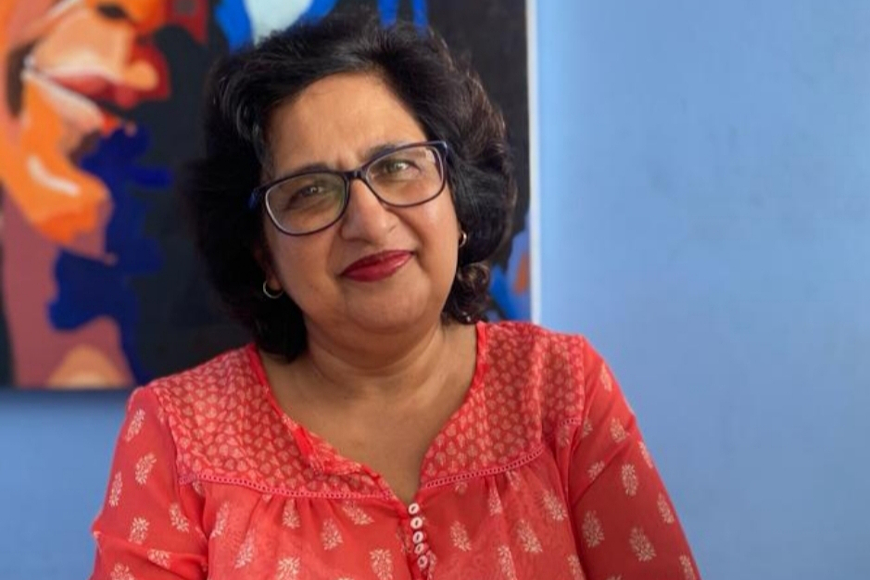“I was quite taken aback when I was contacted by one of the curators. They were looking for women photographers to exhibit alongside South African photographer Zanele Muholi’s collection,” said an elated Deseni Soobben.
 The Durban University of Technology’s (DUT’s) Journalism lecturer is one of the South African women photographers who has been given an opportunity to currently exhibit three of her photographic works at the international Tate London Gallery until end of March 2021.
The Durban University of Technology’s (DUT’s) Journalism lecturer is one of the South African women photographers who has been given an opportunity to currently exhibit three of her photographic works at the international Tate London Gallery until end of March 2021.
Soobben has been teaching in the DUT’s Department of Journalism since 1995 and thoroughly enjoys her teaching role, and her specialist areas of interest are photography, media, culture and gender, and has written a paper on the photographic representation of women in the print media.
Tate is an institution that houses, in a network of four art galleries, the United Kingdom’s national collection of British art, and international modern and contemporary art. Soobben’s work is on display with renowned Zanele Muholi, under the theme of: How Muholi is affirming beauty.
Muholi is a South African artist and visual activist working in photography, video, and installation. Her work focuses on race, gender and sexuality with a body of work looking at black lesbian, gay, transgender, and intersex individuals.
Speaking more about her second international exhibition, Soobben said the exhibition was put together before the COVID-19 pandemic, so the prints are on exhibition at the Tate London until the end of March 2021.
“The exhibition is organised by Tate Modern in collaboration with the Maison Européenne de la Photographie, Paris, Gropius Bau, Berlin and Bildmuseet at Umeå University. I have many relatives and friends in London and they were keen to view the photographs, however London is in a strict lockdown,” she said.
For Soobben, her passion for photography began at the age of 10 years when her grandfather returned from a trip to Japan and gave her a Kodak lnstamatic camera.
She confessed that seeing her work being exhibited is exciting.
“As a photographer, I am thrilled. I have visited Tate London twice in the last 10 years, more recently in 2015 and did not dream of exhibiting at this most prestigious art institution,” she said.
As a Journalism lecturer, she believes it’s vital to be part of such exhibitions. “As a lecturer at a former Technikon and present University of Technology, I think it is vital for students to see that lecturers showcase their work and continually discuss current and relevant matters. So, for example, in the Photojournalism classroom, whilst talking about Henri Cartier-Bresson’s ‘Decisive Moment’, I can point to my photographs that have been published in the print and online media. The exhibition is also seen as a Creative Output, which is important for lecturers,” she relayed.
She said that she finds that many students are also surprised that she had covered such vast stretches of rural KwaZulu-Natal and varying subject matter.
Soobben’s tertiary journey began when she had enrolled in Photography at the then Natal Technikon. She relayed that as a student, she loved taking pictures of soccer matches at Currie’s Fountain, and has had her photos published in The Graphic newspaper.
She worked with Cedric Nunn, Jeeva Rajgopaul and Rafs Mayet at the Durban Afrapix Photo Agency where her work entailed recording photos of civil protest action, as well as violence at the KwaZulu-Natal Midlands which were also circulated across the globe. She even photographed trade union gatherings and the funerals of anti-apartheid activists, to name but a few. Soobben showcased some of her photographs at the Nelson Mandela Foundation Exhibition in September 2015. The exhibition titled: Between States of Emergency, featured South African photographers who were behind the lens from between 21 July 1985 and 7 June 1990: the period of the two states of emergency.
“As a token of appreciation for exposing apartheid and the resistance against it, my photographs were also exhibited and also contributed towards the Between States of Emergency exhibition,” she said.
Nationally, Soobben worked with S’bu Mngadi and Fred Khumalo at the City Press and covered massive areas of KwaZulu-Natal. She then moved on to lecturing at DUT when it was still known as ML Sultan. She holds a National Diploma in Journalism from ML Sultan Technikon, a BA (Hons) in Media and Cultural Studies obtained from the University of Natal, and a MA (Media, Culture and Communication) from UKZN.
She spoke of exhibitions that DUT Journalism students had participated in like in 2019, when her department had hosted the University of Valladolid’s multi-media lecturer, Ismael Garcia.
“DUT’s first-year Photojournalism students worked with Mr Garcia’s first-year Photography students in producing photo-essays. Also, in 2019, the Journalism Programme’s First-year Photojournalism students worked with Michigan State University’s Prof Peter Glendinning’s photographic project called: Attached to the Soil,” she said.
Soobben further indicated that the project is based on how South African university students of today feel about the past, present, and the future of the vision Mandela had expressed.
“Prof Glendinning said that the photographs will be exhibited at DUT’s art gallery. Unfortunately, the launch of the exhibition has been postponed because of the pandemic,” she said.
Pictured: Deseni Soobben
Pictured: One of her works on display at the international Tate London Gallery.
Waheeda Peters


